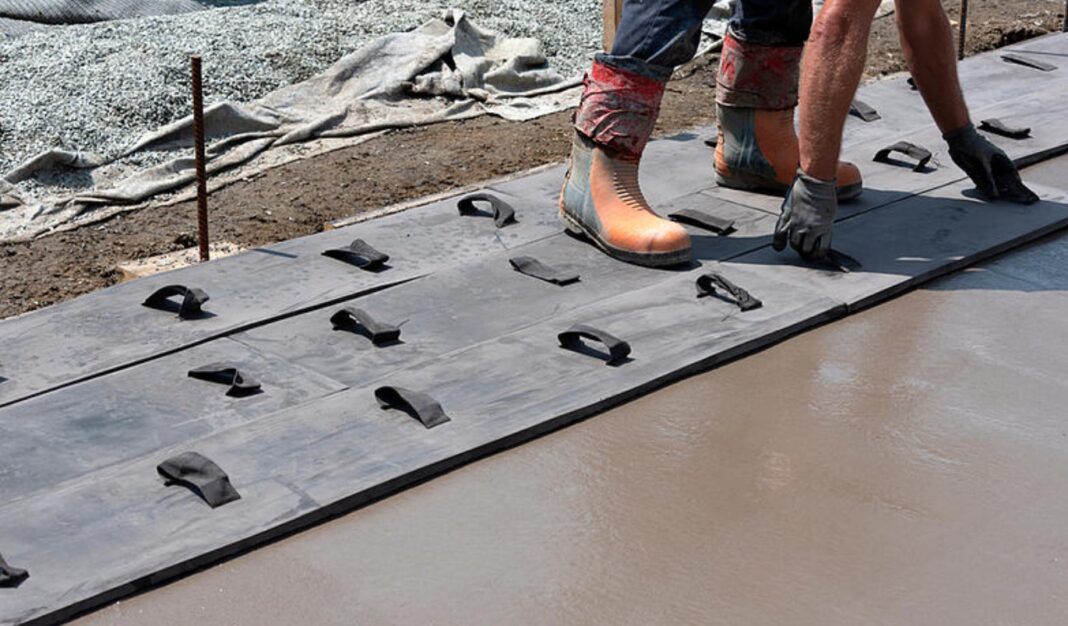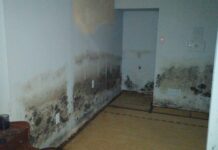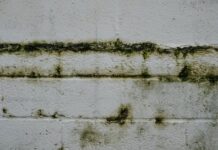There’s no argument that stamped concrete creates beautiful multidimensional walkways and patios. They mimic the look of more expensive materials such as brick, stones, or paver stones. It can also last for up to 25 years when properly cleaned and maintained.
Other than how amazing stamped concrete looks, people also choose it due to its low maintenance. It’s poured as a single slab, so you don’t have to worry about plants growing between the cracks like you see on sidewalks or in some driveways. As far as routine maintenance goes, it needs sweeping and resealed every so often.
When your stamped concrete is installed first, it’s poured and allowed to partially dry. Once it’s partially dried, the professional will begin stamping texture into the concrete. Once that’s done, they will do any additional coloring, detail work, touch-ups, or jointing. Last is the most critical step, and that’s the curing and sealing of the concrete.
This information is brought to you by St. Paul Stamped Concrete Designs. We’re a local stamp concrete company with the expertise and knowledge to get the job done right! Do you require stamped concrete St. Paul? Give us a call!
What’s the Best Way to Clean Stamped Concrete?
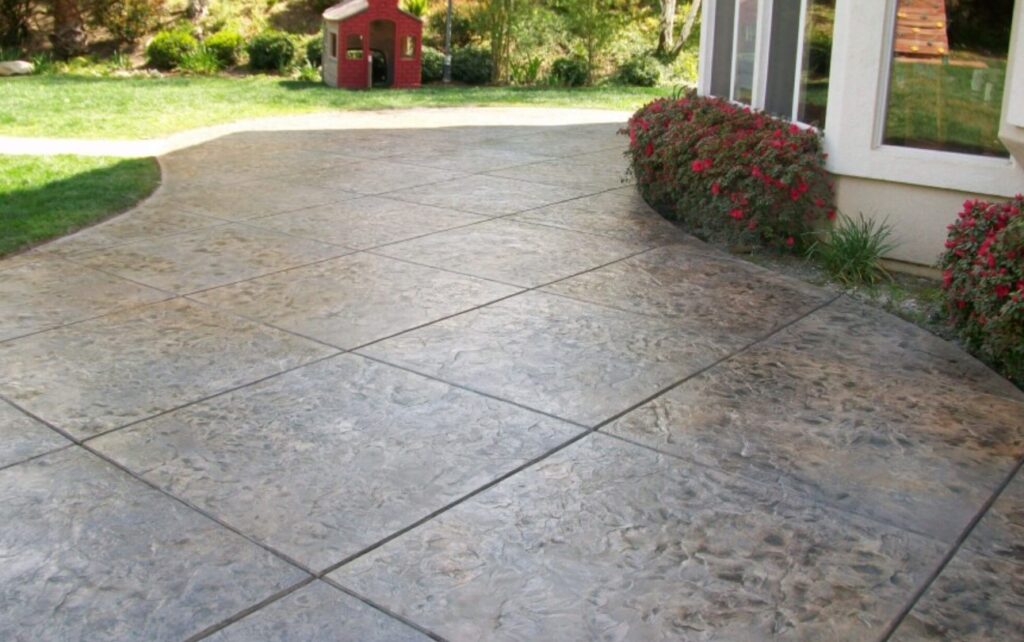
To clean it, you simply need to remove any leaves, grass, and debris by sweeping it, using a leaf blower, or spraying it with a hose. If this debris is left on the concrete, it can cause permanent stains making the concrete lose some of its beauty. Wet leaves become slippery and can cause slip and fall accidents.
To thoroughly clean your stamped concrete, rinse it with a garden hose on high pressure.
Then scrub it with a push broom and mild detergent. There are special cleaning products available if you prefer to use those. Then rinse again, making sure to remove all of the soap.
If there are any stains left after the cleaning, you could use a pressure washer. Do not use the pressure washer too high because it could damage the seal and texture of the surface.
If you don’t want to take the chance of damaging your stamped concrete, you could hire a professional cleaning.
While cleaning your concrete, make sure to watch for cracks that can let water get underneath it, causing it to erode. If you notice any cracks make sure to use patches made explicitly for concrete to repair it immediately. Pay close attention to this in the spring and fall.
How to Care for Stamped Concrete During the Winter
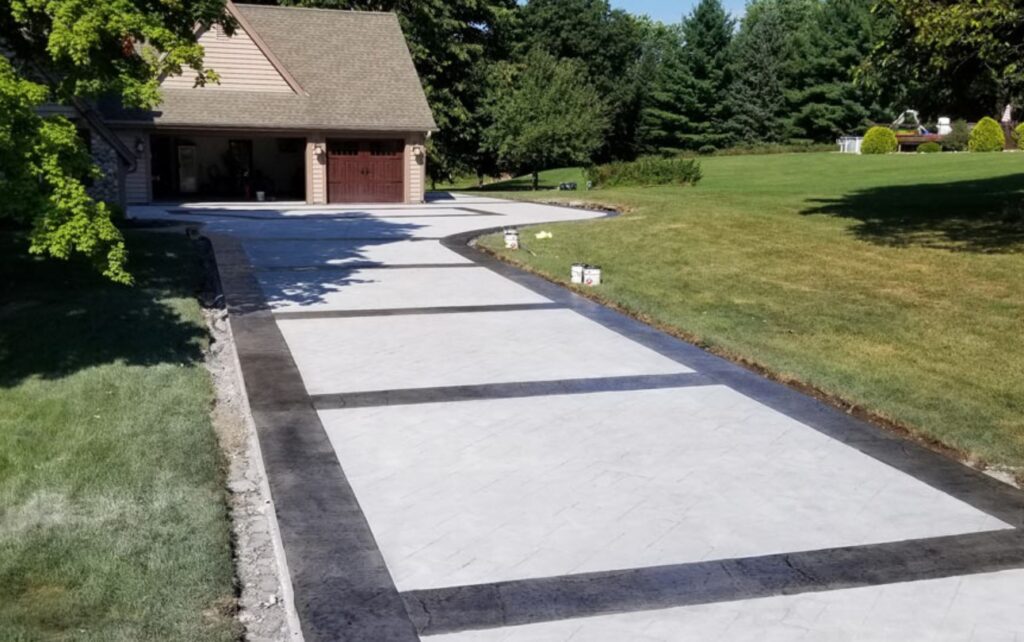
During the winter, you want to clear the ice and snow off the concrete by using a plastic shovel, snowblower. If the snow is light, you can simply sweep it off. You’ll want to get rid of the ice carefully. Instead of using salt or other chemicals, opt for sand for traction. If you are going to use something to melt the ice, you can use natural agents like alfalfa meal or coffee grounds. Both of these have their downfalls, such as alfalfa meal can attract wildlife if it’s not stored correctly, and coffee grounds can stain if they sit too long on the patio.
Heated snow-melting mats are an alternative if you want the greenway to keep your stamped concrete clear of snow and ice. Since you can use them long-term, they need to be placed down before the snow starts, and they can be left down all winter.
Resealing Stamped Concrete
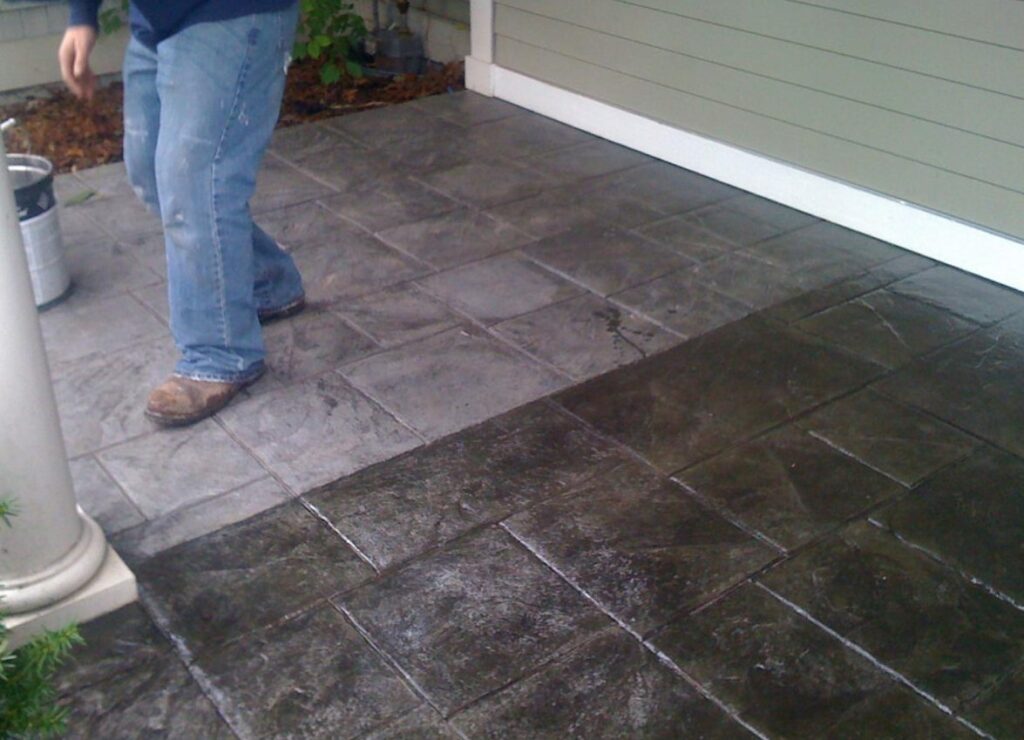
Upon installation, your patio is sealed and will need to be resealed every 2-3 years, and if you choose to do it yourself, it’s recommended to use the original sealer. If you’re unsure what that is, contact the company you had to install your patio; if you’re unable to find out that information, try to stay within the same resin family and use the same type. If you’re still unsure, do a small patch test to make sure.
We recommend having your stamped concrete professionally installed because they know to ensure that the proper sealant is used. Professionals know how to properly clean the concrete before applying sealant and how to plan effectively so they’re not trapped in a corner.
• Stamped Concrete Maintenance Tips
• Never use a pressure washer on a high setting
• Use gentle cleansers
• Reseal your stamped concrete every 2-4 years
• If you have urine on your patio, clean immediately. The acid in urine has high acid levels, leading to stains and eroding the sealer.
• Avoid getting too much water on stamped concrete. For example, letting your lawn sprinklers run frequently.
• Don’t use salt or deicers. The chemicals contained in them can break down the sealer.
• Don’t use metal snow shovels because they can scratch or chip the sealer
• Due to the high heat, avoid placing portable fire pits on the stamped concrete.
• Don’t drag metal patio chairs or tables across the patio or any type of furniture. Instead, lift and carry them.
• Don’t over seal your stamped concrete. It can cause build-up and turn yellow. You’ll have to remove the sealer and start over if this happens.
• Don’t place your drain gutters on your stamped concrete. The water and debris can cause stains and break down the sealant.
• If you need to remove grease, oil, soot, or other sticky substances from your stamped concrete, an alkaline degreaser is the best choice.
• If spots of rust won’t come out with detergent, you may be able to mix a little oxalic acid with it. Before doing this, contact the company that installed it or contact the manufacturer.
• If you notice the surface of your patio dulling and losing its shine, you can typically restore it with a sealer.
• The first winter after having your stamped concrete installed is the most important. Make sure you don’t use any harsh chemicals or deicing salts. It’s not the salts that cause damage but the rapid cycle of freezing and thawing caused by the salt.
Why Is Maintenance Important?
As you can see from all of the information above, keeping your stamped concrete looking great is easy to do. Just the occasional sweeping and resealing every two to three years keeps your stamped concrete in excellent condition, ensuring that it lasts for many years.

